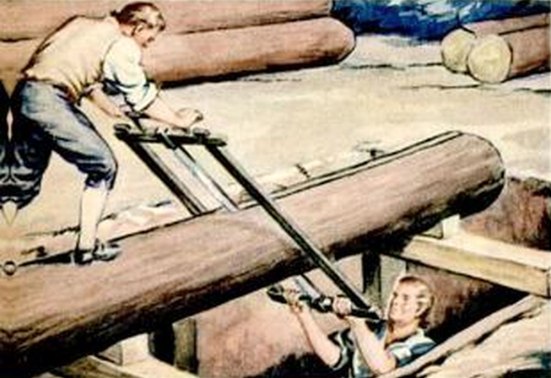
Sir,—I request the insertion of the following statement in your valuable little work. My object is to bring to public notice a most unjust practice among a certain class of men (which, by-the-bye, I am told is law). I withhold names, because it is not persons, but things, which I wish to expose.
I lately bought a piece of squared oak timber of a most respectable merchant, and had it sawed at his yard. The charge for so doing was one pound eight shillings and eleven pence, which appeared to me, at the time I was settling the bill, to be far too much; but being told, in the counting-house, that it was correct, I paid it.
On receiving my purchase I very carefully measured the work, which was as under:—

Finding there were not two hundred feet of sawing altogether, I sent for an explanation, and was again told, at the counting-house, that the charge was perfectly correct—that their men sawed by the load, not by the hundred—that, as there were seven cuts in one piece, they could legally claim for the same number in all three pieces—that it was at my option to have had them all sawed in the same way, and then the charge would have been no more.
This sawyer’s logic, however, is not satisfactory to me; for although it is my anxious wish that every journeyman should be fairly and liberally paid for what he does, yet I see no reason in paying for what has not been done. But if this is the regular London custom in the great timber-yards, it appears to me to be “a custom more honoured in the breach than in the observance,” and that it is time it was done away with.
However, Sir, if you will have the goodness to insert the above in your Magazine, it may cause some other buyers to make previous inquiry respecting the charge for sawing before they give orders for its being done, and thus avoid an addition of more than five per cent. in price to them, as has been once done by,
Sir, yours respectfully,
A Brother Chip.
P.S. It may not be altogether unnecessary to add, that the method of computation at this timber-yard was three cuts for a load, at ten shillings and sixpence per load.
Mechanics’ Magazine – Saturday, May 14, 1825
—Jeff Burks